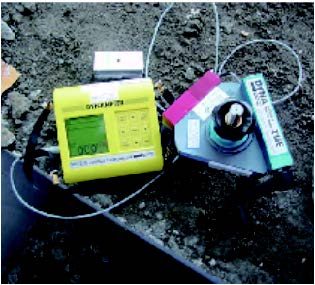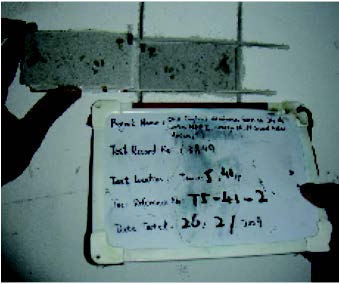Structural Test
Our structural test services are not limited on the list below.
For more information and recommendation, please contact with our professional consultants.
>>> Cover Meter Test
>>> Rebound Hammer Test
>>> Pull Off Test
>>> Carbonation Test
>>> Chloride Content Test
>>> Sulphate Content Test
>>> Compressive Strength Test
>>> Open Up Survey
For more information and recommendation, please contact with our professional consultants.
>>> Cover Meter Test
>>> Rebound Hammer Test
>>> Pull Off Test
>>> Carbonation Test
>>> Chloride Content Test
>>> Sulphate Content Test
>>> Compressive Strength Test
>>> Open Up Survey
| Cover Meter Test |
| When investigating the durability of concrete, it is essential to establish the thickness of concrete cover over the reinforcing bars. Cover Meter Test is specially for detecting the depth of concrete cover, Rebar location and its orientation. Principle  A search head magnetizes the steel in structures and measures the intensity of the induced field. 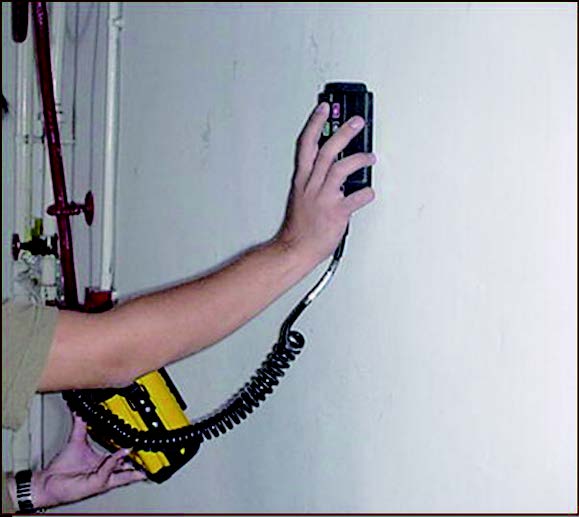 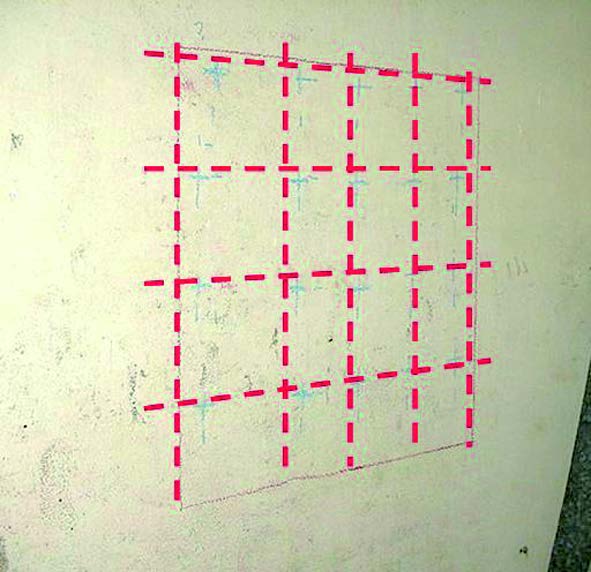 Application
|
|
Rebound Hammer Test
(Accredited by HKLA under HOKLAS – for update status, please refer to HOKLAS website)
|
This technique is used for testing the surface hardness of concrete. It provides the information on the quality of surface structure of the concrete.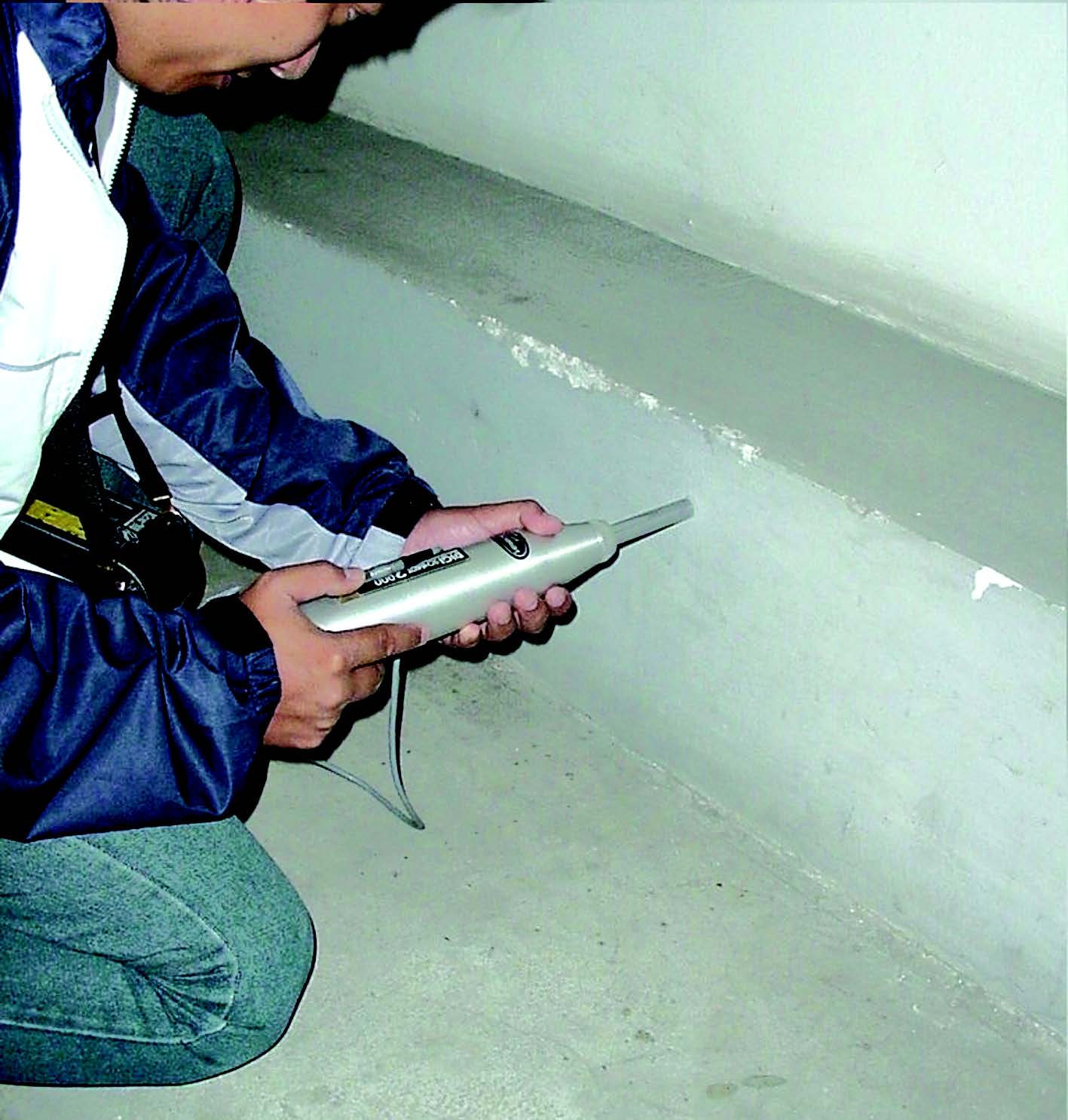 Information provided by rebound hammer test includes:
|
| Pull-off Test (Accredited by HKLA under HOKLAS – for update status, please refer to HOKLAS website) |
||
To test the bonding strength among adhesive and materials such as tiling system, coating, fire resistance membrane & etc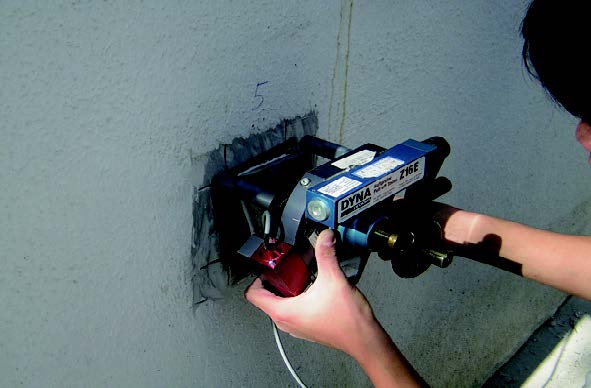 Principle During the test, a steel dolly disc is epoxy resin bonded to the surface of the member under investigation and a pull-off tester is used to apply a tensile force until local failure occurs. Then the maximum tensile force is recorded and the maximum stress is calculated.
|
| Carbonation Test |
Carbonation of concrete is associated with the corrosion of steel reinforcement and with shrinkage. The phenolphthalein indicator solution is applied to surface of concrete sample to measure its pH value in order to determine the depth of carbonation has occurred.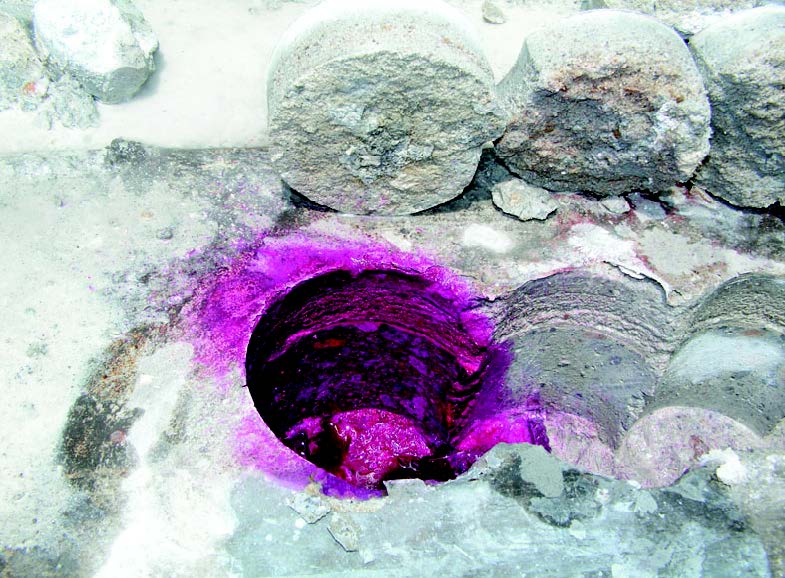 For more information: http://www.understanding-cement.com/carbonation.html How to conduct the test: A Sample of concrete is obtained by drilling/grinding from the structure, or from the fresh concrete, mixed with extraction reliable indication of the condition of carbonation, i.e. Uncarbonated concrete turns bright pink when using phenolphthalein solution. |
| Chloride Content Test |
To test the chloride content of concrete for:
|
